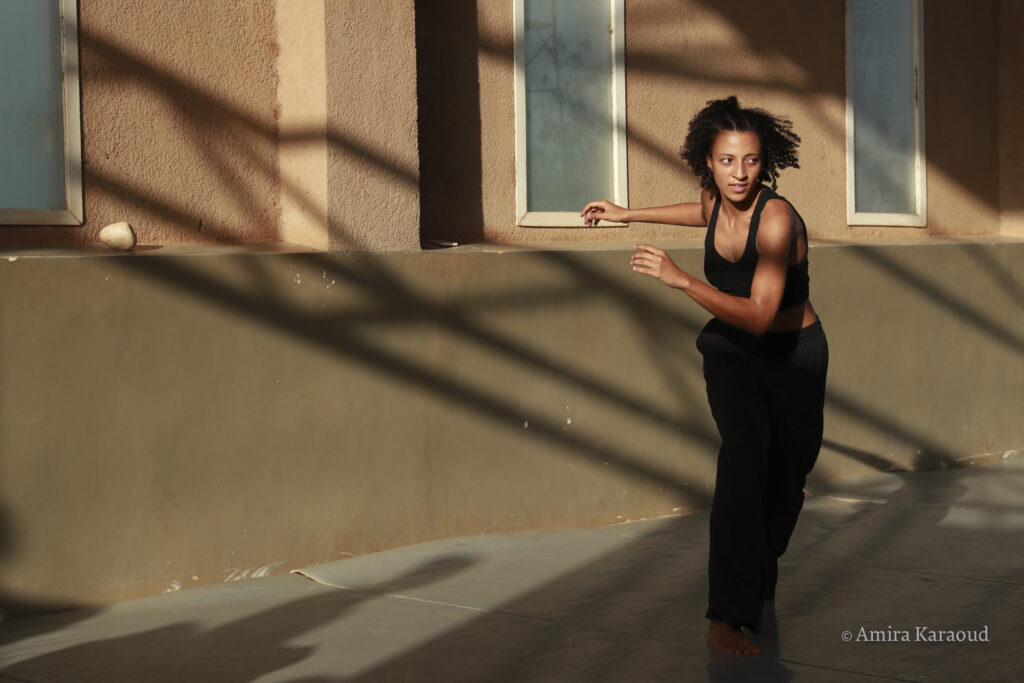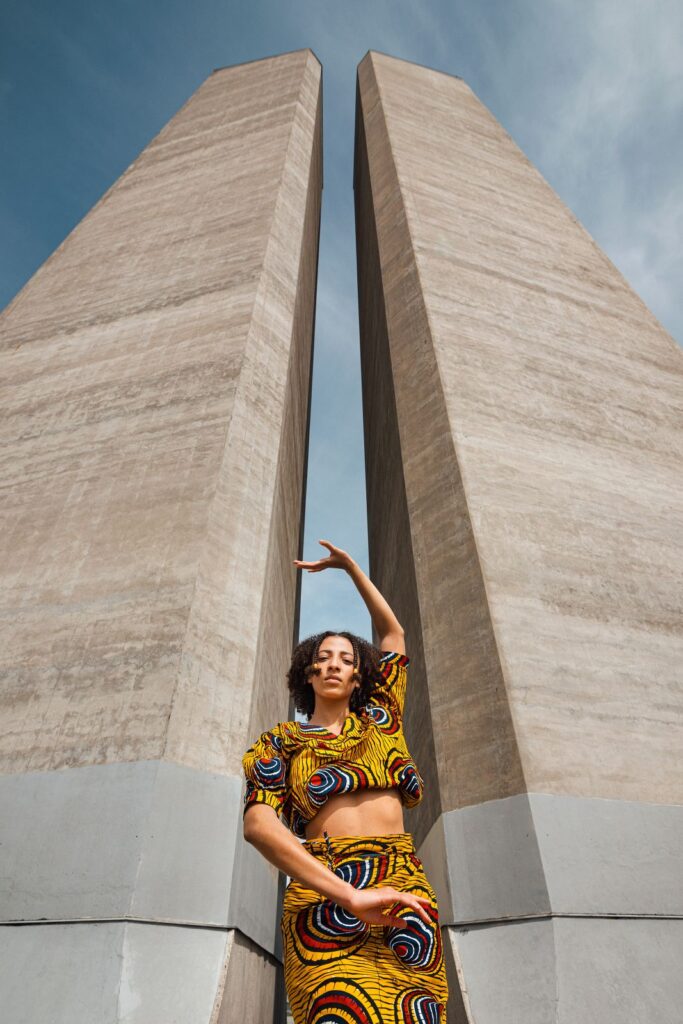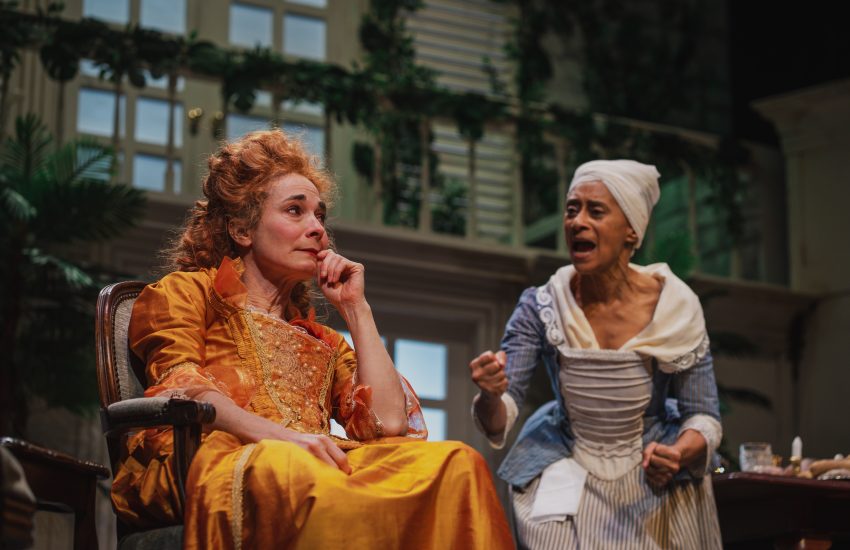Embodying Confluence: An Interview with Angela Nwagbo
How does close interaction with an African culture impact someone who has grown up in an exclusively European environment?
Angela Nwagbo – dancer, performer and actress of Czech and Nigerian origin – talked to Afropean about her first encounters with the African dance tradition in Senegal, and her professional journey in the world of performing arts.
We talked about how it shaped her – both as an artist and individual – who had previously lived most of her life in a culturally homogenous society. She also expounds on her aspirations to create projects that show the world how two different cultures can merge and produce something ‘…unprecedented and beautiful…’
AP: When did you find your passion for performing arts?
AN: I’ve always been a passionate performer. As a child and teenager, I loved to perform for people and to hear the crowd roar and all that. But I really fell for performing arts when I experienced what impact they can have on the human soul. I think the exact time was in 2020 – 2021, between the two lockdowns, that I realised how soothing and life-giving it can be to create and share art with people through movement and dance. That only deepened after taking several trips to Senegal since 2022, where I experienced how the power of performing arts becomes even more intense when they are embedded in cultural heritage.
AP: Can you talk about the artistic education that you received in Europe, and compare it to how they teach performing arts in Africa?
AN: I am originally an urban styles dancer, so for the greater part of my life I learned dance in groups with teachers whom I paid. I enrolled in a dance team that had regular classes 2-3 times a week, and then over summer I would go to dance camps. Later, I was lucky enough to be able to learn by doing paid dance jobs. It was still a learning experience, because I was surrounded by older and more experienced dancers and choreographers who are among the best dancers in the Czech Republic. At that time, I also started going to more open classes; workshops, acting and singing classes and dance camps. I eventually made a trip to New York City to experience the culture first hand. After that, I was accepted to the Theatre Faculty of Performing Arts in Prague (DAMU) for the Acting for Alternative and Puppet Theatre programme. That was my first formal education in arts.
However, the biggest takeaway from my university studies are still ‘only’ good old social connections, which is essentially what I think the arts education is all about in Senegal (not to talk about the entire continent of Africa). I noticed that people connect in order to do art and, as the result of doing art, they learn from the more experienced and teach the less experienced. They create a community and live the culture. 99.9% of the education therefore is ‘non-formal’ because there aren’t any accredited arts programmes.

There is L’École des Sables in Senegal, which is a school of contemporary and African dance founded by the legendary dancers: choreographer, Germaine Acogny and Helmut Vogt. They offer one of the handful of dance courses on the continent for both African and non-African students, run a professional dance company called Jant-Bi II – made up entirely of young Senegalese dancers – and train them to be professional dancers on an international level. But for many of them it is a huge sacrifice to go in the direction of fully pursuing dance as a career and profession. For the majority of Senegalese society, dance isn’t a proper or ‘serious’ profession. Instead, it’s a fun leisure activity at best and, in the worst case scenario, a ‘cover up’ for rebellious acts.
AP: Tell us about the kind of art you enjoy making?
AN: I enjoy making art that I feel speaks about something that needs to be said; something that I have a desire to share because I believe it will make this world better and bring people closer. Art that will simply spark love, joy and understanding. That is what drives me while creating. The unapologetic belief that this is what we need.
AP: Do you have any role models?
AN: Yes, many! Many people whom I’ve met during my journey of self-discovery. A lot of them I met at the 10-week Africa Diaspora training programme in l’École des Sables in Senegal last year. The teachers and mentors Alesandra Seutin, Olivier P. Tarpaga, Sadé Alleyne and Toyin Sogunro to name a few. I’m also often inspired by my friends or acquaintances. My go-to role model in building self-esteem as an artist is a writer, Amy McNee, aka @inspiredtowrite.
AP: What are some of your favourite projects about?
AN: I’m really passionate about a project I’m currently working on. It’s actually my first solo performance and it’s called Confluence. It means the flowing together of two rivers that then form another stream, which isn’t exactly 50% of the two rivers but it becomes a unique mix. Just like when two people from different cultures come together. It is a metaphor for ethnic and racial mixedness; one of the central topics of this physical theatre piece where I explore the relation between African and Slavic culture through music, dance, aesthetics and storytelling.
I also really enjoyed a short film we made called Ariane, which is based on the short story by Caya Makhelé. The movie was directed by Tansi Makele and I play the main character Ariane, a young woman grieving but also regaining strength and independence after losing her child to her abusive partner. This project is particularly precious to me, since it’s centred around the inner life and feelings of an African woman and portrays her in such a raw and honest way we don’t normally get to see.

AP: You are an artist with mixed Afropean roots. How does that influence you in terms of opportunities, on both the Czech and Senegalese/African scene?
AN: In the Czech Republic I mostly gain opportunities based on my ethnicity, so in theatre I usually get roles of ‘exotic’ beauties or foreigners of some kind. In film and TV it varies more. I’ve also landed ‘colour-blind’ roles but I am often cast with the intention to boost diversity. That’s fine, as long as there are no negative connotations. In dance it varies but oftentimes, people are actually happy to cast me as a dancer in the first place, and my ethnicity is seen as an added bonus.
I am not active in any African dance scene so I couldn’t tell how my racial mixedness influences me there. During the time spent [in Senegal] however, I had to cope with feelings of ‘not being African enough’, which arose from the inside rather than from how people treated me. In the end, I realised it’s the paradoxical reality of being mixed. We could view it as belonging everywhere but also as belonging nowhere. Ultimately, the feeling of belonging will come with the people and community we create around ourselves.
AP: Where do you see yourself creatively in future?
AN: I feel it is inevitable that I arrive at a place, mentally and physically, where my Afropean-ness will be nurtured. I would love to work in a dance company or collective that is diverse. One where I don’t have to ‘pick a side’ but where the fluidity between my African and European roots will be understood and accepted, not othered. I would also like to continue exploring the relation between African and European cultures in dance and music, to create eclectic projects that show the world how two different cultures can merge and produce something unprecedented and beautiful.



